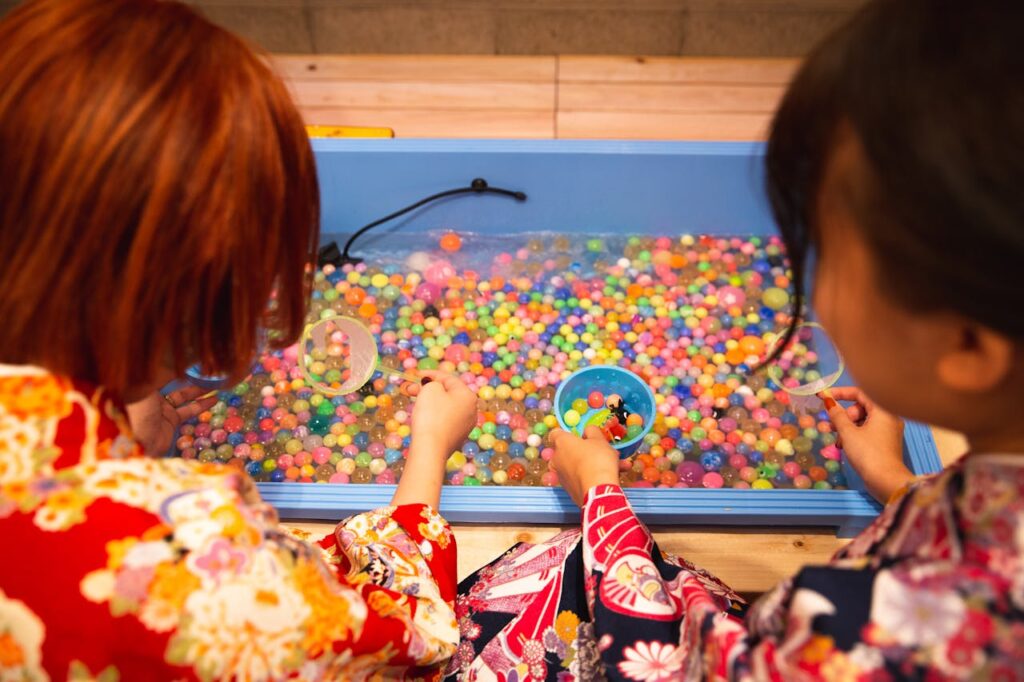Are Orbeez Biodegradable? Environmental Impact and Sustainable Alternatives
If you’ve ever played with those tiny, colourful beads that magically swell into soft, bouncy spheres when soaked in water, you’ve come across Orbeez. Originally designed as a toy, these water-absorbing beads have become a huge hit, not just with kids but also for home décor, gardening, and even stress relief. They’re fun, squishy, and strangely satisfying to touch.
But with all this excitement comes an important question: What happens to Orbeez when we’re done with them? Do they simply disappear over time, or do they stick around in our environment like plastic waste? In other words, are Orbeez biodegradable?
Understanding their environmental impact is crucial, especially as we become more aware of plastic pollution and waste management. In this guide, we’ll take a deep dive into what Orbeez are made of, how they break down (or don’t), and whether they pose a risk to our planet. We’ll also explore eco-friendly alternatives and responsible ways to dispose of them.
So, if you’ve ever wondered whether Orbeez belong in the trash, compost, or somewhere else entirely, stick with me—we’re about to find out.

In This Article
- What Are Orbeez Made Of? Understanding Their Composition
- Are Orbeez Biodegradable? The Breakdown Process
- Are Orbeez Harmful to the Environment?
- Can You Dispose of Orbeez Sustainably?
- Are There Biodegradable Alternatives to Orbeez?
- Conclusion: The Verdict on Orbeez and Sustainability
What Are Orbeez Made Of? Understanding Their Composition
To determine if Orbeez are biodegradable, we first need to understand what they’re made of. And honestly, once you do, you might rethink how you use—or dispose of—them.
The Science Behind Orbeez: Superabsorbent Polymers (SAPs)
Orbeez are made from sodium polyacrylate, a superabsorbent polymer (SAP). If you’ve ever changed a baby’s diaper, you’ve encountered SAPs before. They’re in diapers, sanitary pads, and even agricultural soil treatments because they can absorb and hold hundreds of times their weight in water.
So, how do they work? SAPs are long chains of molecules that form a net-like structure. This structure traps water inside, allowing Orbeez to expand without bursting or dissolving. That’s why they stay intact even after multiple uses.
But here’s the problem: Most synthetic SAPs, including sodium polyacrylate, do not break down easily. Unlike natural materials like wood or cotton, these polymers are designed to last, not to decompose.
Expert Insight:
Research confirms that sodium polyacrylates, the main component of Orbeez, are not readily biodegradable and persist in the environment for years. According to a dossier by Santos, “The sodium polyacrylates are not readily biodegradable; thus, they meet the screening criteria for persistence.”Additionally, the U.S. Food and Drug Administration states that sodium polyacrylate homopolymers “accumulate in the first 15 mm of the ground and are not further removed or biodegraded.” (FDA)
In other words, once Orbeez enter the environment, they stick around.
Are Orbeez Biodegradable? The Breakdown Process
Defining Biodegradability
A material is biodegradable if it can be broken down naturally by tiny organisms—like bacteria and fungi—into harmless substances like water, carbon dioxide, and biomass. In other words, nature must be able to digest it without leaving behind pollution or harmful residues.
For Orbeez to be considered biodegradable, they must:
- Be broken down by natural microbes
- Turn into non-toxic byproducts
- Degrade within a reasonable timeframe
Unfortunately, Orbeez do check these boxes.
How Long Do Orbeez Last in the Environment?
The truth is, Orbeez do not biodegrade quickly, and in many cases, they barely break down at all. Here’s how long Orbeez can last in different environments:
| Environment | Estimated Breakdown Time |
|---|---|
| Soil (regular) | 7-10 years |
| Compost heap | Indefinite (not compostable) |
| Water bodies | 10+ years |
| Landfills | Decades |
Even in ideal conditions, microbes struggle to break down Orbeez. Since they are synthetic, they don’t provide nutrients for bacteria or fungi to consume, so they just sit there, largely unchanged, for years.
Learn More: Are Biodegradable Wipes Flushable?
Are Orbeez Harmful to the Environment?
While Orbeez themselves are non-toxic to humans and animals, their environmental impact is far more concerning than most people realise.
1. Orbeez and Water Pollution
Imagine dropping a handful of Orbeez down a storm drain. Where do they go? Straight into lakes, rivers, and oceans. There, they don’t just float harmlessly—they absorb pollutants like pesticides and heavy metals. Over time, they can release those toxins back into the water, making things even worse.
And let’s talk about drainage systems. Because Orbeez expand dramatically when wet, they can clog pipes and contribute to flooding. Cities have had to deal with sewer blockages caused by improperly discarded water beads.
But the saddest part? Wildlife confusion. Tiny fish, turtles, and other aquatic creatures often mistake Orbeez for food. These beads don’t dissolve in their stomachs, leading to fatal blockages and starvation.
2. Orbeez and Wildlife
On land, the same risk applies. Birds and small animals may swallow Orbeez, thinking they’re berries or seeds. Once inside their bodies, the beads swell, causing digestive issues or worse—death.
3. Orbeez in Soil: A Double-Edged Sword
Some gardeners use Orbeez in their soil to help retain water, but there’s a catch. Unlike compostable materials, Orbeez don’t break down into organic matter. Instead, they linger in the soil for years, doing nothing to enrich it. While they might keep plants hydrated, they don’t contribute to healthy, sustainable soil.
Case Study: Orbeez in a Natural Setting
A 2023 report by the U.S. Consumer Product Safety Commission (CPSC) highlighted the environmental persistence of water beads, such as Orbeez. The report noted that these superabsorbent polymers can expand up to 100 times their original size when exposed to water and do not readily biodegrade, leading to potential environmental hazards. Improper disposal of Orbeez can result in their accumulation in natural habitats, where they may be ingested by wildlife, causing internal injuries or death. Additionally, their presence in waterways contributes to microplastic pollution, disrupting aquatic ecosystems. The CPSC emphasises the importance of proper disposal methods to mitigate these environmental impacts.
Can You Dispose of Orbeez Sustainably?
Since Orbeez are not biodegradable, proper disposal is crucial to minimise their environmental impact. Here are some best practices:
1. DO NOT Flush Orbeez Down the Drain
It might seem like a quick solution, but trust me, it’s a disaster waiting to happen. Orbeez absorb water and expand, which means they can clog pipes, block sewage systems, and even contribute to plumbing nightmares. The last thing you want is an expensive repair bill because a few tiny beads turned into a major blockage.
2. DO NOT Throw Orbeez into Compost Bins
Composting is great for food scraps and yard waste, but Orbeez? Not so much. They don’t break down like organic materials, which means they’ll just sit there, taking up space instead of enriching the soil.
3. The Right Way to Dispose of Orbeez
- Let them dry out – Spread them out in the sun, and they’ll shrink back to their original size. Once dry, toss them in the trash.
- Reuse them – If they’re still clean, you can repurpose them for arts and crafts, plant hydration, or even sensory play.
- Bag them up – If they’re no longer usable, seal them in a bag before tossing them. This prevents them from escaping into the environment.
Eco-Friendly Alternatives
If you love the idea of water beads but want a greener option, try water-storing clay beads or peat moss. These natural alternatives provide the same moisture-retaining benefits without the plastic waste.
Learn More: Is Gum Biodegradable?
Are There Biodegradable Alternatives to Orbeez?
Yes! The good news is that researchers and eco-conscious manufacturers are working hard to create biodegradable water beads that won’t linger in the environment for years. These alternatives are made from natural hydrogels and starch-based polymers, meaning they break down safely without harming wildlife or ecosystems.
Here are some eco-friendly substitutes:
| Alternative | Material | Biodegradable? |
|---|---|---|
| Water-storing crystals | Natural clay compounds | Yes |
| Agar-based water beads | Seaweed-derived agar | Yes |
| Starch-based beads | Plant-based polymers | Yes |
| Peat moss gel | Organic plant material | Yes |
These options work just like Orbeez—expanding in water and holding moisture—but they decompose naturally over time.
Fun Fact: Scientists are even experimenting with biodegradable hydrogel technology that could break down in just weeks instead of years!
Conclusion: The Verdict on Orbeez and Sustainability
So, are Orbeez biodegradable? The short answer is no, at least not in a timeframe that makes them environmentally friendly. While they don’t release harmful chemicals, their persistence in the environment and potential hazards to wildlife make them problematic.
Key Takeaways
- Orbeez are not biodegradable and can last for years in soil and water.
- Improper disposal can cause environmental harm, especially to wildlife and water systems.
- Sustainable disposal methods include drying, reusing, and trashing them securely.
- Eco-friendly alternatives such as starch-based or agar-based beads offer similar benefits without the environmental risks.
Actionable Advice: What You Can Do Today
- Avoid buying Orbeez if sustainability is a priority.
- Use eco-friendly alternatives like natural hydrogels or water-storing crystals.
- Dispose of Orbeez responsibly to prevent environmental damage.
- Spread awareness about their environmental impact to encourage better consumer choices.
By making small, informed choices, we can reduce plastic pollution and work toward a more sustainable future—one squishy bead at a time!







